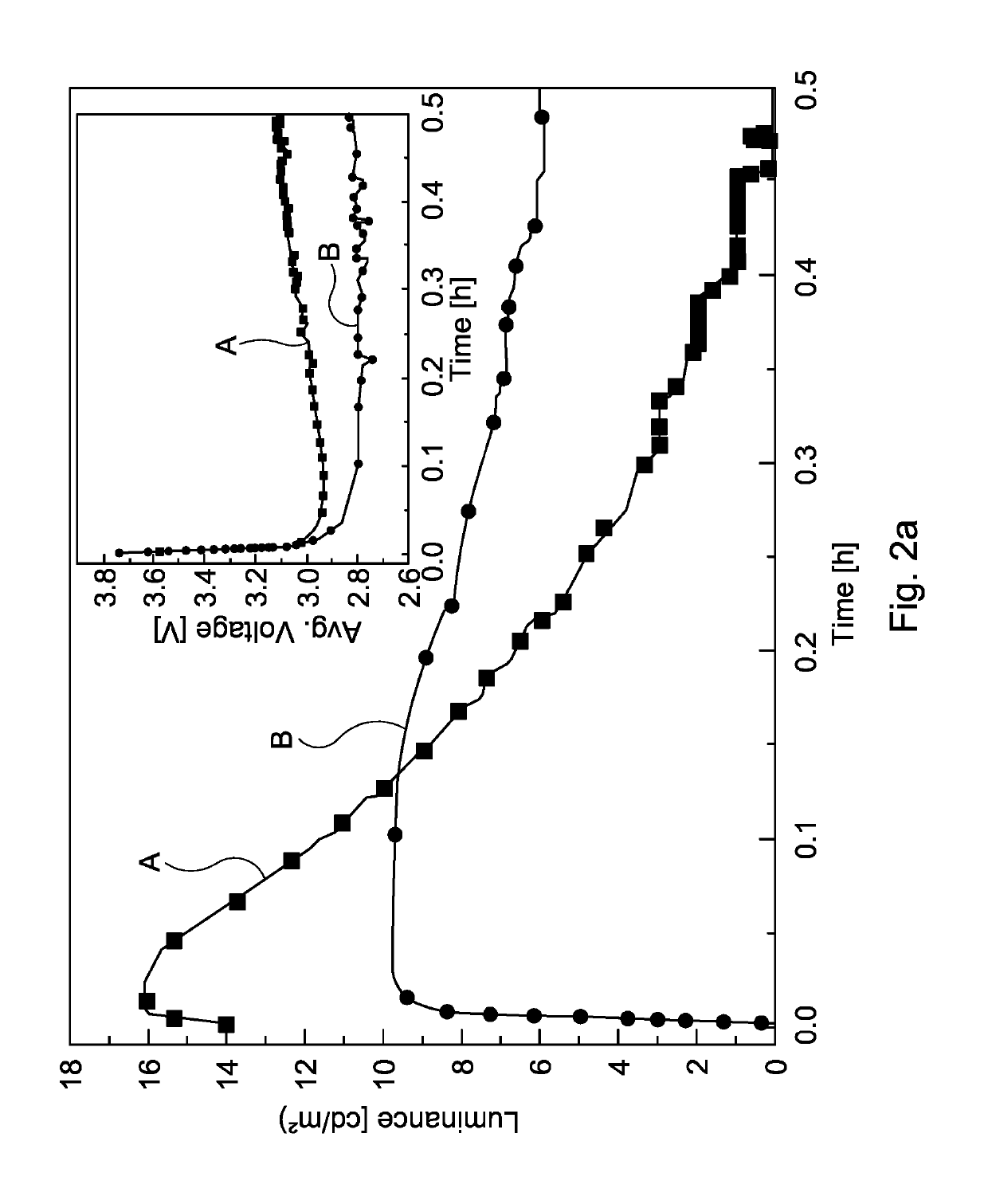Light emitting electrochemical cells and compounds
a technology compounds, applied in the field of light-emitting electrochemical cells (leecs) and luminescent emitter compounds, can solve the problems of high cost, add to the cost of fabrication, and the use of rare heavy metal complexes in leecs,
- Summary
- Abstract
- Description
- Claims
- Application Information
AI Technical Summary
Benefits of technology
Problems solved by technology
Method used
Image
Examples
Embodiment Construction
[0010]According to a first aspect the present invention provides a light-emitting electrochemical cell (LEEC) comprising: a charged organic thermally activated delayed fluorescence (TADF) species and sufficient counter ions to balance the charge on the charged organic thermally activated delayed fluorescence (TADF) species; or mixtures thereof, as emitter material.
[0011]The electroluminescent material of the LEEC may comprise, consists of, or consist essentially of the charged organic thermally activated delayed fluorescence (TADF) species and sufficient counter ions to balance the charge on the TADF species.
[0012]These organic salts (organic charged TADF species and counter ions) can be used in LEECs but also in other electroluminescent devices such as OLEDs. They may also be employed in applications using their photoluminescence properties. The salts and their other uses also constitute further aspects of the invention.
[0013]Mixtures of charged TADF species and / or counter ions may...
PUM
| Property | Measurement | Unit |
|---|---|---|
| thermally activated delayed fluorescence | aaaaa | aaaaa |
| fluorescence | aaaaa | aaaaa |
| electroluminescent | aaaaa | aaaaa |
Abstract
Description
Claims
Application Information
 Login to View More
Login to View More - R&D
- Intellectual Property
- Life Sciences
- Materials
- Tech Scout
- Unparalleled Data Quality
- Higher Quality Content
- 60% Fewer Hallucinations
Browse by: Latest US Patents, China's latest patents, Technical Efficacy Thesaurus, Application Domain, Technology Topic, Popular Technical Reports.
© 2025 PatSnap. All rights reserved.Legal|Privacy policy|Modern Slavery Act Transparency Statement|Sitemap|About US| Contact US: help@patsnap.com



